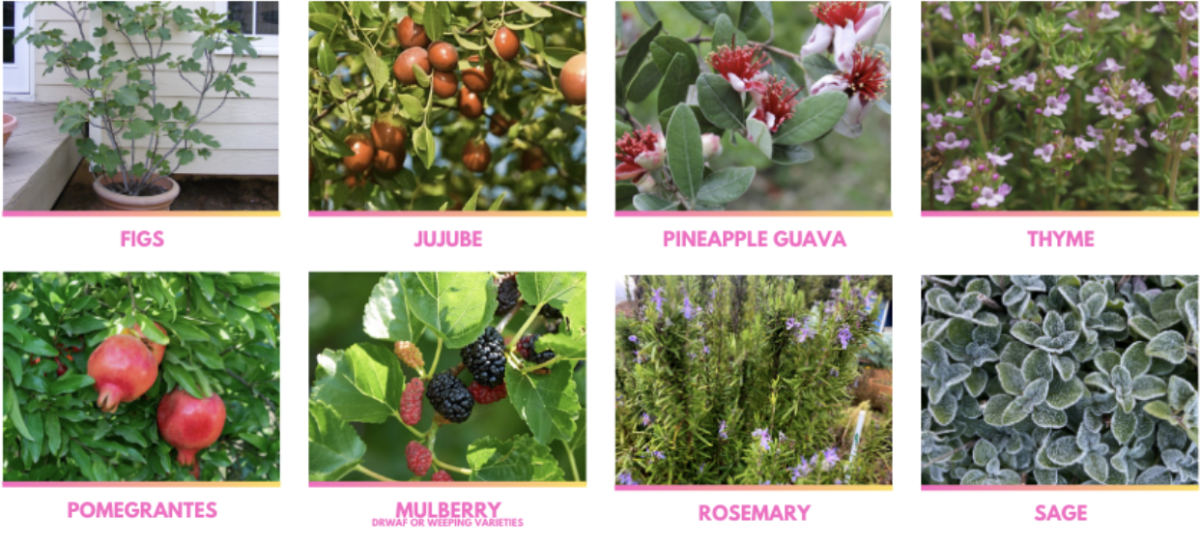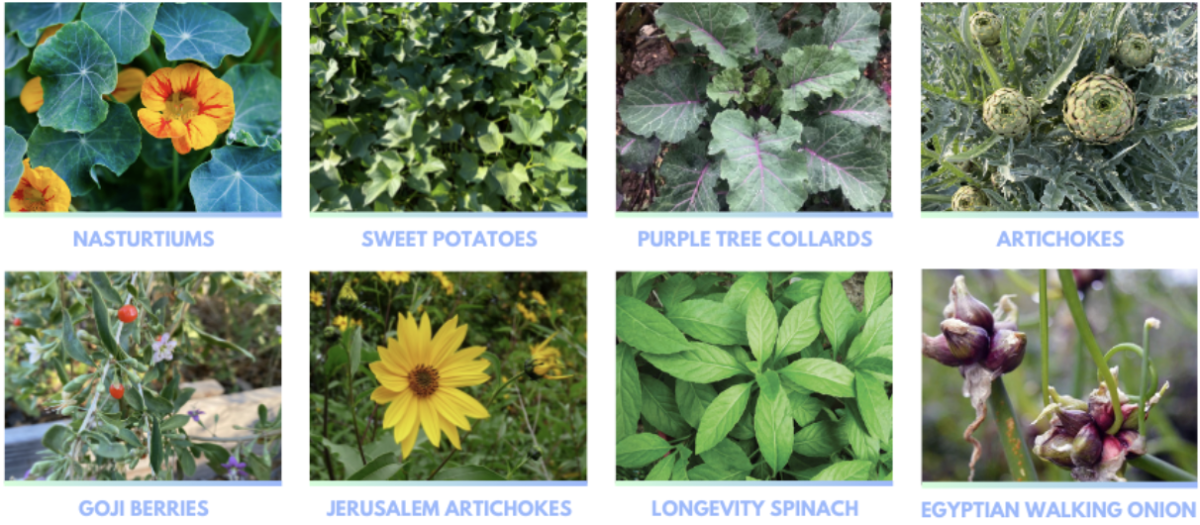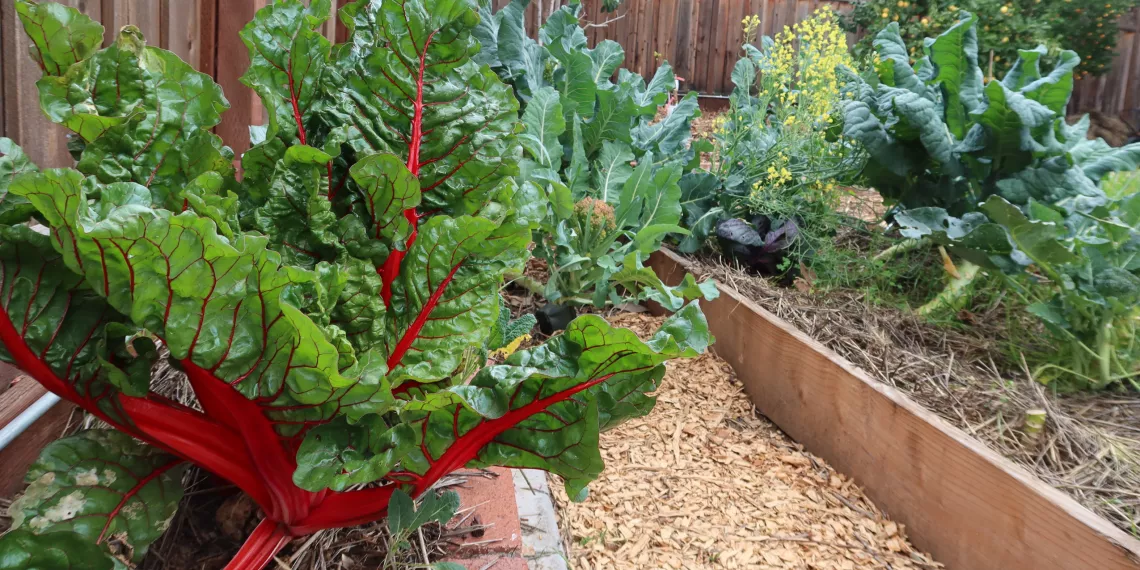An overview of growing an edible garden with limited water.
We all (hopefully) know the moment of bliss when you bite into a fresh plum or pick the first vine-ripened tomato of the season. The burst of flavor is often described as truly out of this world. I do not mean to romanticize the experience of gardening, but it can be such a rewarding experience from planting and harvesting to sharing your bounty with neighbors, friends, and family. Gardening has been a popular activity in the US for a long time.
Growing your food can be a wonderful and fulfilling activity to connect with nature, improve your health and well-being, and, oh yeah, save water. California grows more than 400 agricultural commodities, which translates into over one-third of the vegetables and almost three-fourths of the country’s fruits and nuts (1). Regardless of your view on commercial agriculture, one thing is true, California has prime weather for growing a wide range of edible plants in your backyard, balcony, or indoor window sill.
Sometimes, gardening is easier said than done. And more often than not, when we think about water efficiency and conservation, we think about removing turf and installing beautiful native landscapes. This is certainly a wonderful endeavor and can supply a needed habitat for beneficial pollinators, improve soil health, support local ecology, and save water. All of which is true! But in this article, I will take a different spin on gardening and encourage people to consider adding edible plants to their landscapes.
There are so many underutilized edible plants that thrive with a limited quantity of water. At our nonprofit urban farm in Northern California (2), we often refer to this as “stealth gardening” which means planting edible varieties to increase functionality, as well as beauty and biodiversity in your space.
So, whether you are a seasoned gardener, a novice/aspiring gardener, or somewhere in between, I have provided a few tips on how to grow your own food at home and use water efficiently in the process. This is not an all-encompassing list but some suggestions to get you started!
Tips:
Plant the proper varieties for your region and plant perennials
Our state is one of the few places on the planet with a Mediterranean climate (3). For most of California, we have warm/ mild dry summers and wet mild winters (this may shift due to climate change but for all intents and purposes, this reigns true). This means in the majority of regions in California, we can grow food all year round.
Perennials (4): plants that will come back and regrow year after year. These differ from annuals which are plants that grow for about one season and need to be replanted (carrots, peppers, zucchini, eggplant, etc).
Here are some suggestions for plants to consider growing at home:
Trees / Shrubs
Some of the suggested plants can be considered trees, but can also be grown in pots and pruned to be small and grown as a shrub.

Other Plants
These plants can grow in a range of shapes and sizes making them perfect for growing in the ground or pots.

A note on annuals. While annuals may not be as drought-tolerant as more established perennials, they are still wonderful to add to your garden. When selecting specific varieties, check their drought tolerance of water needs. For example, tomatoes grow successfully with “dry farming” like “Sun Gold” or “Sweet 100s” cherry tomatoes (4). Also, consider growing plants in the winter that could leverage the natural rainfall like lettuce, arugula, or broccoli.

Mulch, mulch, mulch! And add compost
This is a key to making every drop of water stretch. Use mulch in your garden! Mulch is a layer of organic material used in the garden to cover bare soil. Mulch is extremely effective in helping the soil to retain moisture, keeping plants cool, and suppressing weeds (which take water from your desired plants). Mulch comes in various forms including wood chips, straw, leaves, compost, etc. In the fall, instead of throwing away your leaves, save them for your garden. Similarly, you can call your local arborist and ask them to deliver wood chips to your property (free resources).
Once you have gathered your mulch, spread a thick layer onto your soil whether on the ground, in a raised bed, or in a pot, and make sure your soil is not visible. The microbes in your soil and your plants will thank you for this! Also, each season add compost around the base of your plants, this will help retain moisture and keep your soil replenished and happy each year.
Watering tips
Water in the morning or the evening before the day’s temperature warms up. This will ensure the plants have time to soak in the water effectively and are not stressed during the heat of the day.
Hand watering or timed drip irrigation helps to control how much water is given per plant. Established plants do not need regular watering like young plants so in time, you will be able to water less while still reaping an abundant harvest.
Use a portable water meter. I ordered one of these for free thanks to my local water utilities’ effort to conserve water in the garden. Or, you can put your finger in the soil to check for moisture. Just be sure to only water when your plants need it!
Have fun
Growing your own food can be an extremely rewarding experience. The reality of living in California is we have excellent gardening conditions all year round, but also have long dry periods. With this, there are several techniques and tricks to incorporate while adding edible plants into your space. However, at the end of the day, gardening should be fun. Even above all the tips and tricks listed above, I urge you to grab a pot, some soil and seeds, and a watering can and give it a try! Have fun and share please share your trials and successes with those around you.
Additional Resources:
https://www.youtube.com/@epicgardening
https://www.youtube.com/@IVOrganic
https://www.gardeningknowhow.com/special/xeriscape/drought-resistant-vegetables.htm
Kalyn is a member of the Angeles Chapter Water Committee who resides in the Bay area and serves as the Chair of Garden to Table Silicon Valley.
